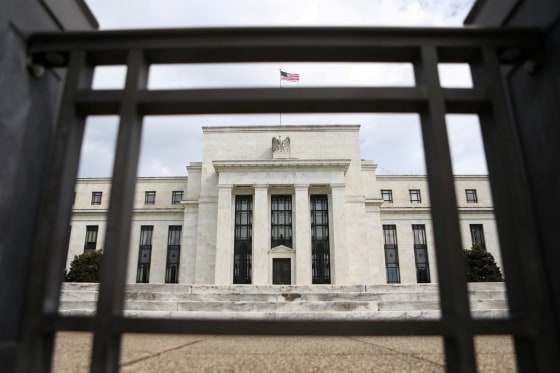
Economists predict that consumers may not benefit from a break from high borrowing costs this year due to tariffs that go into force on Tuesday.
On Saturday, President Donald Trump signed orders imposing tariffs on the United States’ top three trading partners: a 10% duty on China, and 25% tariffs on imports from Canada and Mexico.
Economists predict that if such tariffs are imposed and maintained, they will result in higher pricing for American consumers.
Economists predicted that the Federal Reserve may decide to halt its interest rate-cutting campaign for the foreseeable future due to the increasing pressure on inflation at a time when it hasn’t yet returned to its target level.
Consumer borrowing costs for credit cards and other debt are influenced by the Fed’s benchmark interest rate.
The opportunity for the Fed to start lowering interest rates again during the next 12 to 18 months simply closed under such conditions. Following Trump’s signing of the tariff orders, Paul Ashworth, the chief North America economist at Capital Economics, wrote in a note on Saturday.
‘A lot of uncertainty’ on Trump tariff policy
Economists noted that because the situation is dynamic, it is nearly impossible to provide an accurate judgment.
For instance, Mexican President Claudia Sheinbaum agreed to quickly deploy 10,000 troops to her nation’s border to combat drug trafficking, and Trump announced on Monday that he would halt the implementation of a 25% tariff on Mexico for a month.
For the time being, it looks like tariffs on China and Canada will go into force on Tuesday as scheduled.
Susan Collins, head of the Federal Reserve Bank of Boston, told CNBC on Monday that there is a great deal of ambiguity regarding the course of policies.
How tariffs may impact inflation, interest rates
According to Joe Seydl, senior markets economist at J.P. Morgan Private Bank, tariffs on Canada, China, and Mexico, if implemented over an extended period of time, are predicted to raise U.S. inflation by 0.5 to 1 percentage points through 2026.
The Fed’s favored inflation indicator, the Personal Consumption Expenditures Price Index, measures core prices, which exclude the costs of food and energy.
This is significant since the Fed controls inflation and the labor market through interest rate policy. If everything else were equal, rising inflation would be expected to keep interest rates higher for a longer period of time.
In the fourth quarter of 2025, tariffs on Canada, China, and Mexico would raise PCE inflation by around 0.7 percentage points compared to a baseline with no tariffs, to about 2.8%, according to a report released by Evercore ISI on Tuesday.
According to the Evercore paper, that would eliminate at least one of the two Fed cuts that are still possible this year.
Fed officials predicted in December that they would lower interest rates twice in 2025.
Given the one-month halt of the Mexico tariff announced today, there is obviously some ambiguity about whether these tariffs will proceed or not, according to an email sent by Stephen Brown, Capital Economics’ deputy chief North America economist. The Fed is unlikely to make another cut if the tariffs are implemented.
Brown believes it is doubtful that tariffs will force the central bank to boost interest rates once more, despite some people’s suggestions to the contrary. According to him, tariffs would probably hurt the US economy.
Similarly, according to Seydl, J.P. Morgan estimates that the proposed tariffs would lower the U.S. gross domestic product, which is a gauge of economic production, by 0.5 to 1 percentage point by 2026.
The Fed may eventually lower rates as a result of that economic drag, he said, surpassing the inflationary effect of tariffs.
More from CNBC:
-
Trump s tariffs could threaten Hollywood production, box office recovery
-
Ontario premier says he s ripping up $100 million contract with Musk s Starlink in response to U.S. tariffs
-
New York City office demand is finally back to normal
